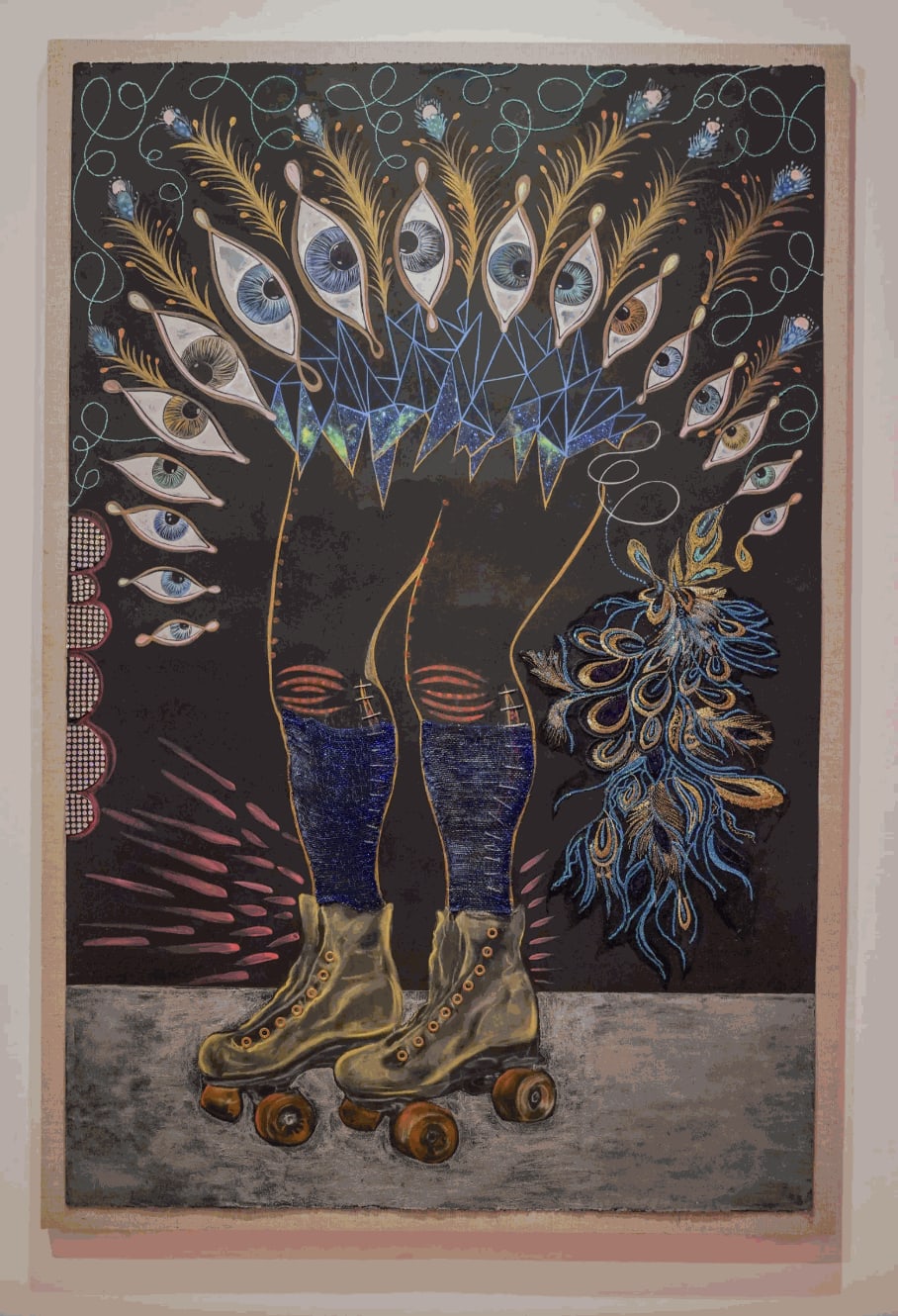14 October 2024
SAN FRANCISCO — Hot pink paint, like the tropical flash of a wild bougainvillea vine, radiates from the walls of Gallery Wendi Norris. On its tangled, ever-morphing relationship with femme identity, pop culture, and activism, a Pantone color expert writes, “Pink isn’t just a color; it’s a time traveler.” These same associations intertwine with the feminist-futurist themes in Chitra Ganesh’s shapeshifting, multiverse-hopping art, making this hue a fitting backdrop for her new works.
Ganesh’s constantly mutating body of work defies tidy categorization. Over the past two decades, the multidisciplinary artist has honed her signature, symbol-rich visual lexicon. She works deftly across formats (film, animation, murals, archives, comic books, a coloring book), bringing together wide-ranging iconography and references that crisscross eras and cultures (mythology, science fiction, art histories, protest movements, queer theory, feminist texts, and more). Earlier this year, art publisher DISTANZ released her first monograph, focusing on the latter half of the Brooklyn-born artist’s career.
Tiger in the Looking Glass, Ganesh’s fifth solo show with Gallery Wendi Norris, features a dozen mixed-media paintings on paper (all 2024), accompanied by a new commission in the gallery’s bathroom that will be a permanent installation. These works cycle between bright, jungly landscapes and moonlit, dream-plucked scenes rendered in a velvety violet-black palette. Portraying themes of life and death, healing and transformation, lush with stylized flora, the show takes cues from Barahmasa (meaning “12 months” in Hindi) paintings, a genre known for interpreting seasonal themes in 12-part series, with one painting for each month.
Femme figures move through each surreal outdoor scene. One side-saddles a colossal pigeon. Another, in the titular painting, gazes into a mirror, where a floating tiger’s head roars in the reflection; a tendril of what initially seems to be floral wallpaper curls over the woman’s shoulder and across her wrist, as if alive. Symbols and hybrid forms abound: A cone of light illuminates a breasted blue creature with a human body and monkey tail; crystals emerge from the top of a pair of legs whose shins are gashed and stitched and feet rock roller skates; supine legs, enclosed in a womb-like hole, sprout red-veined foliage.
Seen up close, the hidden details in these works pop. A medley of materials add literal and symbolic dimension to Ganesh’s watercolor, gouache, acrylic, and ink paintings. Vintage jewelry, miniature mirrors, and constellations of sequins sparkle. Looping stitchwork embellishes the corner of some pieces. Slim braids of synthetic hair, metal grommets, blue eye amulets, and iridescent green beetle wings shimmer. In “Moonscape,” glimmering glass shards fill a speech bubble. As her work often does, image and medium combine with layered references to convey multiple meanings.
There are boundless ways to interpret the 12 works in this show, each populated with fierce femmes and curious chimera, and layered with symbols and portal-like forms (holes, mirrors, eyes). Yet Ganesh’s fantastical worlds also relate to current realities. In a gallery talk, she underscored the societal importance of “moving towards multiplicity at a moment where things are extremely binary,” both politically and socially — citing the United States’s two-party political system and efforts to regulate gender and women’s bodies.
In Tiger in the Looking Glass, Ganesh reimagines and refracts our present world through a surrealist lens, inviting expansive possibilities for being, flourishing, transforming. Explore the show slowly and decode it like a dream — it will reveal its luminous vision to you.
Tiger in the Looking Glass continues at Gallery Wendi Norris (436 Jackson Street, San Francisco, California) through October 26. The exhibition was organized by the gallery.










